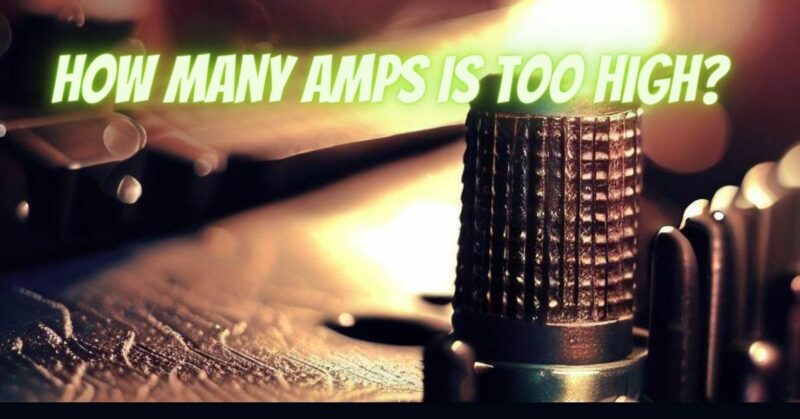The amount of audio amps that is too high depends on a few factors, including the impedance of the speakers, the sensitivity of the amplifier, and the desired listening level.
- Speaker impedance: Speakers with high impedance require more amps to achieve a given volume than speakers with low impedance. For example, a pair of 8 ohm speakers will need more amps than a pair of 4 ohm speakers.
- Amplifier sensitivity: Amplifiers with low sensitivity also require more amps to achieve a given volume than amplifiers with high sensitivity. For example, an amplifier with a sensitivity of 0.05 watts per watt will need more amps than an amplifier with a sensitivity of 0.08 watts per watt.
- Desired listening level: The desired listening level will also affect the amount of amps needed. If you want to listen to your music at a very loud volume, then you will need more amps than if you want to listen at a moderate volume.
In general, it is best to start with the lowest amp setting and then increase it until you reach the desired volume. If you hear any distortion or noise, then you have too many amps.
Here are some additional tips for choosing the right amount of amps for your audio system:
- Consult the speaker and amplifier specifications to determine the optimal amp setting.
- If you are not sure how many amps you need, it is always best to err on the side of caution and choose an amplifier with more amps than you actually need.
- If you are using a subwoofer, you will need to factor in the impedance of the subwoofer when choosing an amplifier.
- If you are planning on using your audio system for live sound, you will need to choose an amplifier that can handle the higher power requirements.
By following these tips, you can ensure that you are using the correct amount of amps for your audio system and avoid any potential damage to your speakers or amplifier.
Here are some additional things to keep in mind when choosing the amount of amps for your audio system:
- Distortion: Distortion is a type of unwanted change in an audio signal. It can be caused by too many amps or by other factors, such as a poor quality amplifier.
- Clipping: Clipping is a type of distortion that occurs when an amplifier is driven too hard. It can cause the audio signal to become distorted and unpleasant to listen to.
- Headroom: Headroom is the difference between the maximum output level of an amplifier and the noise floor. The more headroom an amplifier has, the less likely it is to distort.
When choosing the amount of amps for your audio system, it is important to strike a balance between loudness and quality. You want to be able to play your music at a loud volume without causing distortion or clipping. The best way to find the right amount of amps is to experiment until you find one that sounds good to you.


